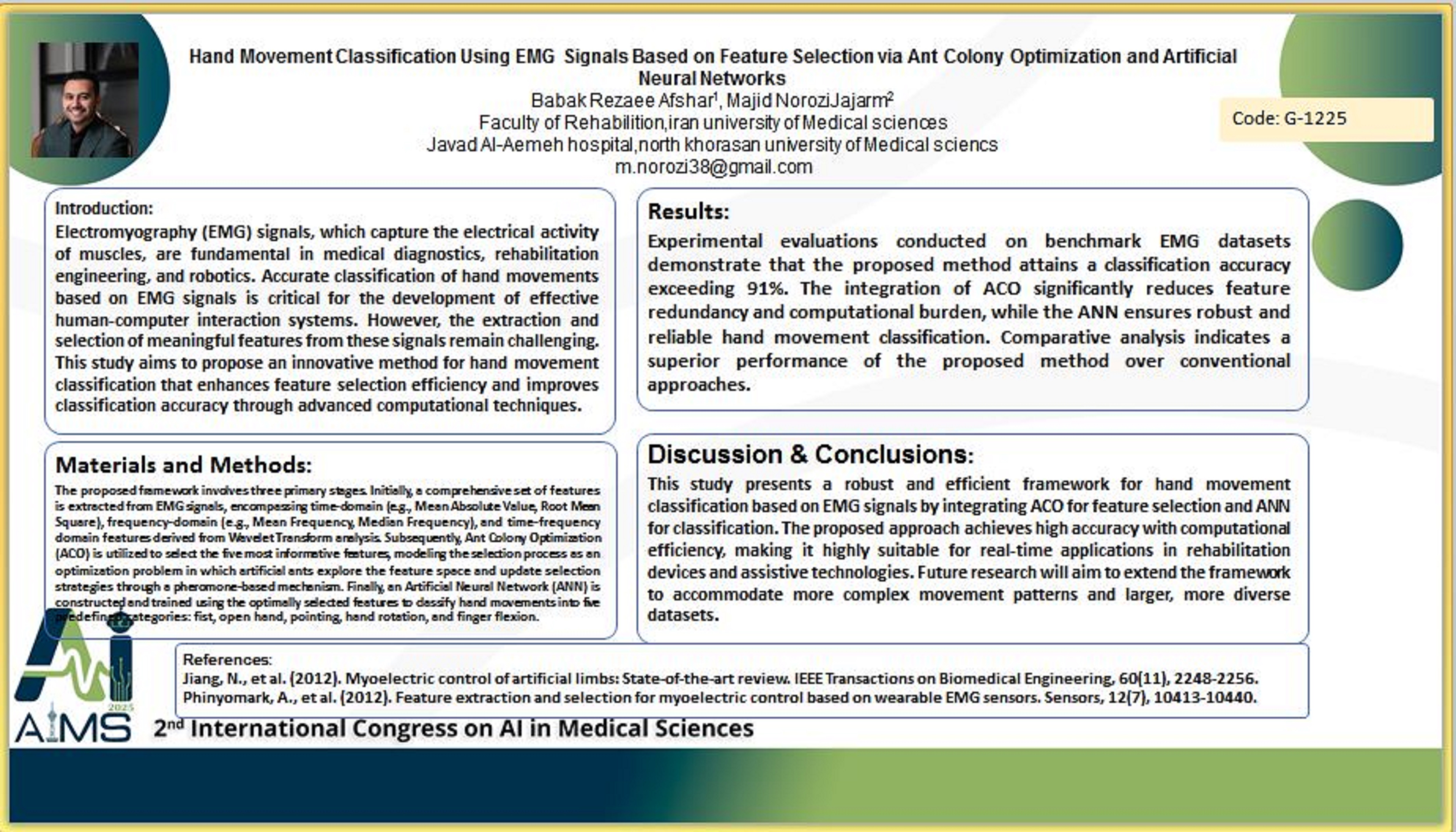طبقه بندی حرکت دست با استفاده از سیگنال الکترومایوگرام بر پایه انتخاب ویژگی کلونی مورچگان و شبکه های عصبی مصنوعی
کد: G-1225
نویسندگان: Babak Rezaee Afshar *, Majid Norozi ℗
زمان بندی: زمان بندی نشده!
برچسب: پردازش سیگنال های پزشکی
دانلود: دانلود پوستر
خلاصه مقاله:
خلاصه مقاله
Background and Aim: Electromyography (EMG) signals, which record the electrical activity of muscles, are crucial in medical diagnostics, robotics, and rehabilitation. Accurate classification of hand movements using EMG signals is a critical step in designing human-computer interaction systems. However, the extraction and selection of meaningful features from EMG signals pose significant challenges. This study aims to present a novel method for hand movement classification that optimizes feature selection and improves classification accuracy using advanced techniques. Method: The proposed framework consists of three main stages. First, various features are extracted from EMG signals, including time-domain features (e.g., Mean Absolute Value, Root Mean Square), frequency-domain features (e.g., Mean Frequency, Median Frequency), and time-frequency domain features derived from Wavelet Transform. Second, Ant Colony Optimization (ACO) is employed to select the five most informative features from the extracted set. ACO models the feature selection process as an optimization problem, where ants traverse the feature space and iteratively enhance feature selection based on a pheromone update mechanism. Finally, an Artificial Neural Network (ANN) is designed and trained using the optimal features selected by ACO to classify hand movements into five categories: fist, open hand, pointing, hand rotation, and finger flexion. Result: Experimental evaluations on benchmark EMG datasets reveal that the proposed method achieves superior classification accuracy of over 91%. The integration of ACO for feature selection reduces redundancy and computational cost, while the ANN ensures robust movement classification. The results confirm the effectiveness of the proposed approach compared to traditional methods. Conclusion: This study introduces a reliable and efficient method for classifying hand movements from EMG signals using ACO and ANN. The framework achieves high accuracy while maintaining computational efficiency, making it suitable for real-time applications in rehabilitation and assistive technologies. Future work will focus on expanding the method to more complex movement tasks and datasets.
کلمات کلیدی
Electromyography(EMG), Hand Movement Classification, ANN, ACO
